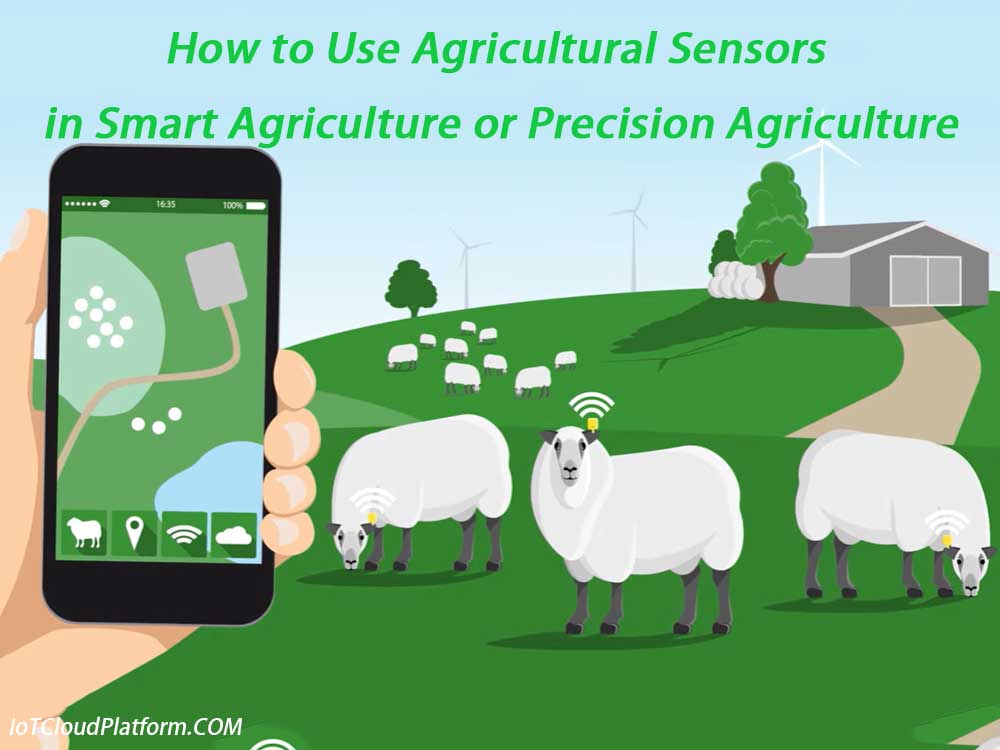
How to Use Agricultural Sensors in Smart Agriculture or Precision Agriculture
The application of agricultural sensors in smart agriculture or precision agriculture is an important part of the development of modern agricultural technology.
They provide accurate and scientific decision-making support for agricultural production by real-time monitoring and collecting data such as farmland environment, crop growth conditions and meteorological conditions.
The following is a detailed introduction to the application of agricultural sensors in smart agriculture or precision agriculture:
Overview of agricultural sensors
Agricultural sensors are devices that can sense and convert various physical quantities (such as temperature, humidity, light, soil parameters, etc.) in the agricultural environment into measurable signals. After processing, these signals can be provided to farmers or agricultural management systems to guide agricultural production, optimize resource allocation, and improve crop yield and quality.
Application of agricultural sensors in smart agriculture
Farmland environment monitoring
(1) Soil monitoring
- Soil moisture sensor: used to measure the moisture content in the soil, help farmers understand the soil moisture status, reasonably arrange irrigation plans, and avoid resource waste and crop growth restrictions caused by over-irrigation or under-irrigation.
- Soil temperature sensor: measures soil temperature to provide a suitable temperature environment for crop growth.
- Soil pH and nutrient sensors: monitor the pH and nutrient content of the soil, guide farmers to apply fertilizers rationally, and improve soil fertility and crop yields.
(2) Meteorological monitoring
- Meteorological sensors: including temperature and humidity sensors, wind speed and direction sensors, rainfall sensors, etc., used to monitor the meteorological conditions above the farmland and provide farmers with timely meteorological warnings and agricultural management suggestions.
Crop growth monitoring
(1) Plant growth sensors
- Height and growth rate sensors: monitor the height and growth rate of crops, help farmers understand the growth status of crops and predict yields.
- Chlorophyll content sensors: measure the chlorophyll content in crop leaves to assess the photosynthesis capacity and nutritional status of crops.
(2) Image and video sensors
- Using high-resolution cameras and image processing technology, real-time monitoring of crop growth, identification of pests and diseases and nutritional deficiencies, and providing a basis for precision agricultural management.
Precision agriculture management
(1) Precision fertilization
Based on the data from soil nutrient sensors and crop growth sensors, formulate precise fertilization plans to reduce excessive use of fertilizers, reduce production costs, and reduce environmental pollution.
(2) Precision irrigation
Combined with the data from soil moisture sensors and meteorological sensors, precision irrigation is achieved, and the irrigation volume is automatically adjusted according to the crop water demand and soil moisture conditions to improve water resource utilization efficiency.
(3) Pest and disease control
Through pest and disease monitoring sensors and image video sensors, the occurrence of pests and diseases is monitored in real time, early warnings are issued and prevention and control measures are taken to reduce crop losses.
Application of agricultural sensors in precision agriculture
Precision agriculture emphasizes precise management based on the specific needs of crop growth and the actual conditions of the farmland environment. The application of agricultural sensors in precision agriculture is mainly reflected in the following aspects:
Precision sowing
Using seed sensors and soil sensors carried by drones or smart sowing machines, soil moisture, nutrient content and other parameters are monitored in real time, and precise sowing is carried out according to crop growth needs to improve the accuracy and efficiency of sowing.
Precision harvesting
Use crop growth sensors and image video sensors to monitor the maturity of crops, use smart harvesters for precision harvesting, reduce crop losses and improve harvesting efficiency.
Precision management decision-making
Combining data from a variety of agricultural sensors, through big data analysis and artificial intelligence algorithms, provide farmers with precise agricultural management decision support, including irrigation decisions, fertilization decisions, pest and disease prevention decisions, etc.
Development trend of agricultural sensor technology
With the continuous development of science and technology, agricultural sensor technology is also constantly improving and improving. In the future, agricultural sensor technology will show the following development trends:
Intelligence and integration
Agricultural sensors in the future will be more intelligent and integrated, able to monitor multiple parameters at the same time and perform data processing and analysis, improving the use efficiency of sensors and data accuracy.
Precision and customization
With the development of precision agriculture, agricultural sensors will pay more attention to precision and customization. Different crops and farmland environments require different sensors and monitoring solutions. In the future, agricultural sensors will be able to be customized and optimized according to different needs.
Wireless and Remote
The development of wireless sensor networks and remote monitoring technology will promote the wireless and remote application of agricultural sensors. Farmers and managers can remotely view real-time data and images of farmland through the Internet or mobile devices to achieve remote monitoring and management.
Integration of Internet of Things and Big Data
Agricultural sensors will be deeply integrated with Internet of Things and big data technologies to form a smart agricultural ecosystem. Through the Internet of Things technology, sensors and smart devices can be interconnected, and through big data technology, massive data analysis and mining can be achieved, providing more accurate and scientific decision support for agricultural production.
Summary
In summary, the application of agricultural sensors in smart agriculture or precision agriculture has broad prospects and important significance.
They provide accurate and scientific decision support for agricultural production by real-time monitoring and collection of data such as farmland environment, crop growth conditions and meteorological conditions, and promote the development of modern agriculture towards intelligence and precision.



